Core Rulebook
Character Ops Manual
Pact Worlds
Androids
Racial Traits
Ability adjustments+2 Dex, +2 Int, -2 Cha
Hit Points4
Vital StatsAverage Height 5–7 ft. Average Weight 100-200 lbs. Age of Maturity — Maximum Age See Android entry
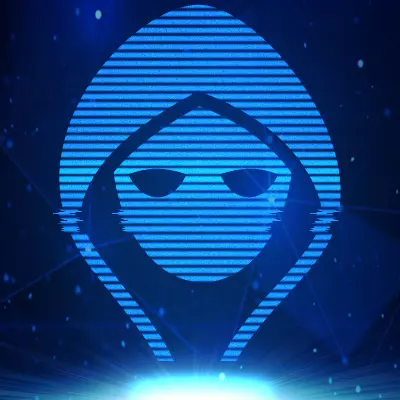
Size/Subtype
Androids are Medium humanoids with the android subtype.
Background
Complex technological creations crafted to resemble humans, androids were originally a servitor race, but they have since broken free to form their own society. Unlike ordinary robots or ship AIs, androids do not simply respond according to their programming; rather, they have independent consciousnesses and are animated by souls—a distinction crucial to their generally accepted status as people rather than property.
Racial Abilities
Exceptional Vision
Androids have darkvision with a range of 60 feet and low-light vision. See pages 263–264 for more information.
Flat Affect
Androids find emotions confusing and keep them bottled up. They take a –2 penalty to Sense Motive checks, but the DCs of Sense Motive checks attempted against them increase by 2.
Upgrade Slot
Androids have a single armor upgrade slot in their bodies. Regardless of whether androids are wearing physical armor, they can use this slot to install any one armor upgrade that could be installed into light armor.
Constructed
For effects targeting creatures by type, androids count as both constructs and humanoids (whichever type allows an ability to affect them for abilities that affect only one type, and whichever is worse for abilities that affect both types). They receive a +2 racial bonus to saving throws against disease, mind-affecting effects, poison, and sleep, unless those effects specifically target constructs. In addition, androids do not breathe or suffer the normal environmental effects of being in a vacuum.
Humans
Racial Traits
Ability adjustments+2 to any one ability score
Hit Points4
Vital StatsAverage Height 5–7 ft. Average Weight 100-300 lbs. Age of Maturity 18 years Maximum Age 80+2d20 years
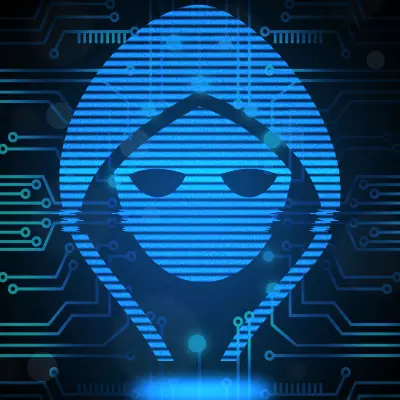
Size/Subtype
Humans are Medium humanoids and have the human subtype.
Background
Ambitious, creative, and endlessly curious, humans have shown more drive to explore their system and the universe beyond than any of their neighbor races—for better and for worse. They’ve helped usher in a new era of system-wide communication and organization and are admired for their passion and tenacity, but their tendency to shoot first and think about the consequences later can make them a liability for those races otherwise inclined to work with them.
Racial Abilities
Bonus Feat
Humans select one extra feat at 1st level.
Skilled
Humans gain an additional skill rank at 1st level and each level thereafter.
Kasathas
Racial Traits
Ability adjustments+2 Str, +2 Wis, -2 Int
Hit Points4
Vital StatsAverage Height 6-7 ft. Average Weight 120-200 lbs. Age of Maturity 25 years Maximum Age 100+2d20 years
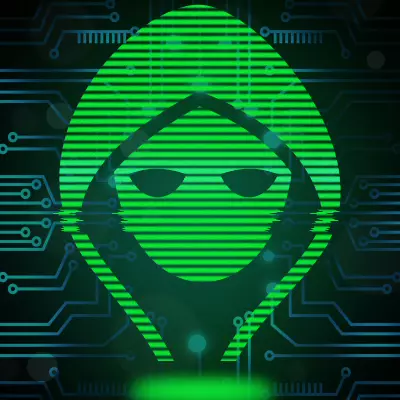
Size/Subtype
Kasathas are Medium humanoids with the kasatha subtype.
Background
Originally from a planet orbiting a dying star far beyond the Pact Worlds, the four-armed kasathas maintain a reputation as a noble and mysterious people. They are famous for their anachronistic warriors, ancient wisdom, and strange traditions.
Racial Abilities
Desert Stride
Kasathas can move through nonmagical difficult terrain in deserts, hills, and mountains at their normal speed.
Historian
Due to their in-depth historical training and the wide-ranging academic background knowledge they possess, kasathas receive a +2 racial bonus to Culture checks.
Four-Armed
Kasathas have four arms, which allows them to wield and hold up to four hands’ worth of weapons and equipment. While their multiple arms increase the number of items they can have at the ready, it doesn’t increase the number of attacks they can make during combat.
Natural Grace
Kasathas receive a +2 racial bonus to Acrobatics and Athletics checks.
Lashuntas
Racial Traits
Ability adjustments+2 Cha, +2 Str, -2 Wis (Korasha) or +2 Cha, +2 Int, -2 Con (Damaya)
Hit Points4
Vital StatsAverage Height 5-7 ft. Average Weight 140-180 lbs. Age of Maturity 20 years Maximum Age 80+2d20 years
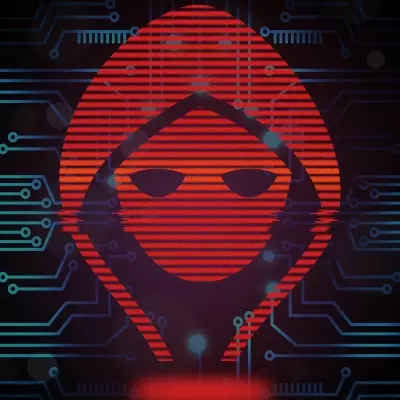
Size/Subtype
Lashuntas are Medium humanoids with the lashunta subtype.
Background
Idealized by many other humanoid races and gifted with innate psychic abilities, lashuntas are at once consummate scholars and enlightened warriors, naturally divided into two specialized subraces with different abilities and societal roles.
Racial Abilities
Dimorphic
All lashuntas gain +2 Charisma at character creation. Korasha lashuntas are muscular (+2 Strength at character creation) but often brash and unobservant (–2 Wisdom at character creation). Damaya lashuntas are typically clever and well-spoken (+2 Intelligence at character creation) but somewhat delicate (–2 Constitution at character creation).
Student
Lashuntas love to learn, and they receive a +2 racial bonus to any two skills of their choice.
Lashunta Magic
Lashuntas gain the following spell-like abilities: At will: daze, psychokinetic hand 1/day: detect thoughts. See Spell-like Abilities on page 262. The caster level for these effects is equal to the lashunta’s level.
Limited Telepathy
Lashuntas can mentally communicate with any creatures within 30 feet with whom they share a language. Conversing telepathically with multiple creatures simultaneously is just as difficult as listening to multiple people speaking.
Shirren
Racial Traits
Ability adjustments+2 Con, +2 Wis, -2 Cha
Hit Points6
Vital StatsAverage Height 5-6 ft. Average Weight 100-150 lbs. Age of Maturity 5 years Maximum Age 50+1d20 years

Size/Subtype
Shirrens are Medium humanoids with the shirren subtype.
Background
Once part of a ravenous hive of locust-like predators, the insectile shirrens only recently broke with their hive mind to become a race of telepaths physically addicted to their own individualism, yet dedicated to the idea of community and harmony with other races.
Racial Abilities
Blindsense
Shirrens’ sensitive antennae grant them blindsense (vibration)—the ability to sense vibrations in the air—with a range of 30 feet. See page 262 for more information about blindsense.
Communalism
Shirrens are used to working with others as part of a team. Once per day, as long as an ally is within 10 feet, a shirren can roll a single attack roll or skill check twice and take the higher result.
Cultural Fascination
Shirrens are eager to learn about new cultures and societies. Shirrens receive a +2 racial bonus to Culture and Diplomacy checks.
Limited Telepathy
Shirrens can communicate telepathically with any creatures within 30 feet with whom they share a language. Conversing telepathically with multiple creatures simultaneously is just as difficult as listening to multiple people speak.
vesk
Racial Traits
Ability adjustments+2 Str, +2 Con, -2 Int
Hit Points6
Vital StatsAverage Height 6-8 ft. Average Weight 200-300 lbs. Age of Maturity 16 years Maximum Age 70+1d20 years
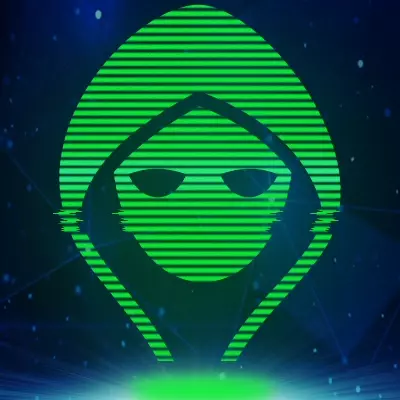
Size/Subtype
Vesk are Medium humanoids with the vesk subtype.
Background
Heavily muscled and covered with thick scales and short, sharp horns, the reptilian vesk are exactly as predatory and warlike as they appear. Originally hailing from a star system near the Pact Worlds, they sought to conquer and subdue their stellar neighbors, as they had all the other intelligent races in their own system, until an overwhelming threat forced them into a grudging alliance with the Pact Worlds—for now.
Racial Abilities
Armor Savant
Vesk use armor in a way that complements their uniquely sturdy physiology. When wearing armor, they gain a +1 racial bonus to AC. When they’re wearing heavy armor, their armor check penalty is 1 less severe than normal.
Fearless
Vesk receive a +2 racial bonus to saving throws against fear effects.
Low-Light Vision
Vesk can see in dim light as if it were normal light. For more details, see page 264.
Natural Weapons
Vesk can attack with a special unarmed strike that deals lethal damage, doesn’t count as archaic, and threatens squares. Vesk gain a special version of the Weapon Specialization feat with this unarmed strike at 3rd level, allowing them to add 1–1/2 × their character level to their damage rolls for this unarmed strike (instead of just adding their character level, as usual).
ysoki
Racial Traits
Ability adjustments+2 Dex, +2 Int, -2 Str
Hit Points2
Vital StatsAverage Height 3-4 ft. Average Weight 60-100 lbs. Age of Maturity 10 years Maximum Age 60+1d20 years
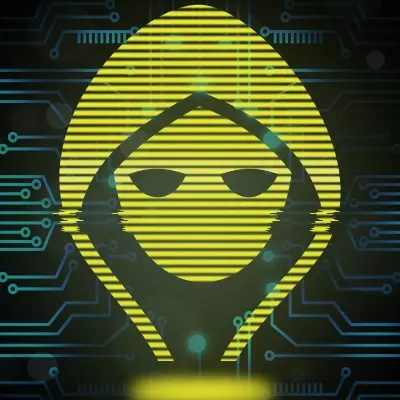
Size/Subtype
Ysoki are Small humanoids with the ysoki subtype.
Background
Small and furtive, the ysoki are often overlooked by larger races. Yet through wit and technological prowess, they’ve spread throughout the solar system, giving truth to the old adage that every starship needs a few rats.
Racial Abilities
Cheek Pouches
Ysoki can store up to 1 cubic foot of items weighing up to 1 bulk in total in their cheek pouches, and they can transfer a single object between hand and cheek as a swift action. A ysoki can disgorge the entire contents of his pouch onto the ground in his square as a move action that does not provoke an attack of opportunity.
Darkvision
Ysoki can see up to 60 feet in the dark. See page 263 for more information.
Moxie
Ysoki are scrappy and nimble even when the odds are against them. A ysoki can stand from prone as a swift action. Additionally, when off-kilter (see page 276), a ysoki does not take the normal penalties to attacks or gain the flat-footed condition. When attempting an Acrobatics check to tumble through the space of an opponent at least one size category larger than himself, a ysoki receive a +5 racial bonus to the check.
Scrounger
Ysoki receive a +2 racial bonus to Engineering, Stealth, and Survival checks.
dwarves
Racial Traits
Ability adjustments+2 Con, +2 Wis, -2 Cha
Hit Points6
Vital StatsAverage Height 4 to 4-1/2 ft. Average Weight 150–200 lbs. Age of Maturity 40 years Maximum Age Age 250+2d% years

Size/Subtype
Dwarves are Medium humanoids with the dwarf subtype.
Background
Dwarves are a stocky race, roughly a foot shorter than humans, with broad, heavy frames. Dwarves trace their heritage to the missing planet of Golarion, yet for them, this is not merely a matter of history, but identity—they were forged in the furnace of Golarion’s subterranean passages, and many dwarves born long after the planet’s disappearance still feel the sting of its loss, kept alive in dwarven song and legend. Dwarven history also claims that they once had a different racial god, Torag, who left his worshipers in the hands of his brother Angradd during the Gap so he could stand guard over Golarion, wherever it is now.
Racial Abilities
Darkvision
Dwarves can see up to 60 feet in the dark.
Slow but Steady
Dwarves have a land speed of 20 feet, which is never modified when they are encumbered or wearing heavy armor. They also gain a +2 racial bonus to saving throws against poisons, spells, and spell-like abilities, and when standing on the ground they gain a +4 racial bonus to their KAC against bull rush and trip combat maneuvers.
Stonecunning
Dwarves gain a +2 bonus to Perception checks to notice unusual stonework, such as traps and hidden doors located in stone walls or floors. They receive a check to notice such features whenever they pass within 10 feet of them, whether or not they are actively looking.
Traditional Enemies
Dwarves still train to fight their ancient enemies. A dwarf gains a +1 racial bonus to attack rolls against a creature with the goblinoid or orc subtype and a +4 racial bonus to AC against an attack from a creature with the giant subtype.
Weapon Familiarity
Dwarves are proficient with basic and advanced melee weapons and gain specialization with those weapons at 3rd level.
elves
Racial Traits
Ability adjustments+2 Dex, +2 Int, -2 Con
Hit Points4
Vital StatsAverage Height 5-1/2 to 6-1/2 ft. Average Weight 100–150 lbs. Age of Maturity 100 years Maximum Age 350+4d% years

Size/Subtype
Elves are Medium humanoids with the elf subtype.
Background
Lithe, long-lived humanoids, elves are easily recognized by their pointed ears and pupils so large that their eyes seem to be all one color. Possessed of an inherent bond with the natural world, they tend to subtly take on the coloration of their surroundings over the course of many years and have a deep spiritual regard for nature.
Racial Abilities
Elven Immunities
Elves are immune to magic sleep effects and receive a +2 racial bonus to saving throws against enchantment spells and effects.
Elven Magic
Elves receive a +2 racial bonus to caster level checks to overcome spell resistance. In addition, elves receive a +2 racial bonus to Mysticism skill checks.
Keen Senses
Elves receive a +2 racial bonus to Perception skill checks.
Low-Light Vision
Elves can see in dim light as if it were normal light. See Vision and Light on page 261.
gnomes
Racial Traits
Ability adjustments+2 Con, +2 Cha, -2 Str (Feychild) or +2 Con, +2 Int, -2 Str (Bleachling)
Hit Points4
Vital StatsAverage Height 3 and 3-1/2 ft. Average Weight 35-45 lbs. Age of Maturity 40 years Maximum Age 500 years
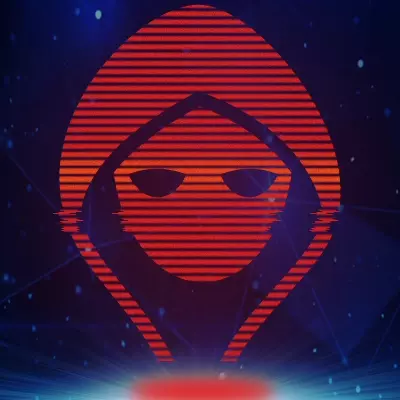
Size/Subtype
Gnomes are Small humanoids with the gnome subtype.
Background
Long-ago emigrants from the primal fey realm called the First World, gnomes are a vivacious people who have adapted to their tumultuous heritage in curious ways, and evolved significantly from accounts found in pre-Gap records. Gnomes today fall into two ethnicities: feychildren and bleachlings.
Racial Abilities
Curious
Gnomes receive a +2 racial bonus to Culture checks.
Dimorphic
A feychild gnome gains +2 Charisma, while a bleachling receives +2 Intelligence.
Eternal Hope
Gnomes receive a +2 racial bonus to saving throws against fear effects. Once per day, after rolling a 1 on a d20, the gnome can reroll and use the second result (see page 243).
Gnome Magic
Gnomes gain the following spell-like abilities (see page 262): 1/day—dancing lights, ghost sound, and token spell. The caster level for these effects is equal to the gnome’s character level. In addition, gnomes get a +2 racial saving throw bonus against illusion spells and effects.
half elves
Racial Traits
Ability adjustments+2 to any one ability score
Hit Points4
Vital StatsAverage Height 5-1/2 to 6-1/2 ft. Average Weight 100–200 lbs. Age of Maturity 20 years Maximum Age 180 years

Size/Subtype
Half-elves are Medium humanoids with both the elf and human subtypes.
Background
If it’s true that opposites attract, then elves and humans are the best proof. Despite their general distrust of non-elves, many elves find humanity’s passionate energy, dedication to living in the moment, and ability to accomplish so much in their short lives deeply appealing—a flame that burns all the brighter for its brevity. At the same time, many humans are attracted to elves’ lean bodies, elegant style, and centuries of wisdom. Where the two populations interact, half-elves occasionally result.
Racial Abilities
Keen Senses
Half-elves receive a +2 racial bonus to Perception skill checks.
Low-Light Vision
Half-elves can see dim light as if it were normal light. See Vision and Light on page 261.
Adaptability
Half-elves receive Skill Focus as a bonus feat at 1st level.
Elven Blood
Half-elves are immune to magic sleep effects and receive a +2 racial bonus to saving throws against enchantment spells and effects.
halflings
Racial Traits
Ability adjustments+2 Dex, +2 Cha, -2 Str
Hit Points2
Vital StatsAverage Height 2-1/2 to 3-1/2 ft. Average Weight 25-35 lbs. Age of Maturity 20 years Maximum Age 200 years

Size/Subtype
Halflings are Small humanoids with the halfling subtype.
Background
Halflings are a common race in the Pact Worlds and their colonies, having spread nearly as far as humans. Popular legend even claims that halflings were among the first humanoids to spread beyond Golarion and into the stars to colonize new worlds. Once thought of as a people without a homeland, halflings have peppered the void with colonies, and halfling caravan fleets—dozens of ships from as many different makes and eras—ply the trade lanes, eager to see new sights, swap stories, and trade strange and foreign goods. Their small stature and tendency to wander make halflings popular targets for raiders and conquerors, but time and again the tenacious race has rebounded from harsh challenges thanks to their cooperation, optimism, and what seems to be a racial gift for subterfuge.
Racial Abilities
Halfling Luck
Halflings receive a +1 racial bonus to all saving throws. This bonus increases to +3 against fear effects.
Keen Senses
Halflings receive a +2 racial bonus to Perception skill checks.
Sneaky
Halflings receive a +2 racial bonus to Stealth checks. In addition, halflings reduce the penalty for using Stealth while moving by 5, and reduce the Stealth check penalty for sniping by 10.
Sure-Footed
Halflings receive a +2 racial bonus to Acrobatics and Athletics skill checks.
Half Orcs
Racial Traits
Ability adjustments+2 to any ability score
Hit Points6
Vital StatsAverage Height 5–7 ft. Average Weight 130–200 lbs. Age of Maturity 14 years Maximum Age 60+2d10 years

Size/Subtype
Half-orcs are Medium humanoids with both the human and orc subtypes.
Background
Half-orcs have both human and orc ancestry. Though these individuals sometimes result from the union of orcs and humans, the relative rarity of pure-blooded orcs among the Pact Worlds means that most half-orcs are the children of other half-orcs. They usually stand a bit taller than humans and have strong, muscular builds, with green or gray skin. Many halforcs have tusk-like canines protruding from their lower jaws, as well as slightly pointed ears and large brows that give them a brooding appearance.
Racial Abilities
Darkvision
Half-orcs can see up to 60 feet in the dark.
Intimidating
Half-orcs receive a +2 racial bonus to Intimidate skill checks.
Self-Sufficient
Half-orcs receive a +2 racial bonus to Survival skill checks.
Orc Ferocity
Once per day, a half-orc brought to 0 Hit Points but not killed can fight on for 1 more round. The half-orc drops to 0 HP and is {Dying} (following the normal rules for death and {Dying} but can continue to act normally until the end of his next turn, when he becomes {Unconcious} as normal. If he takes additional damage before this, he ceases to be able to act and falls {Unconcious}.
astrazoans
Racial Traits
Ability adjustments+2 Dex, +2 Cha, -2 Con
Hit Points4
Vital StatsAverage Height 2-1/2 to 3-1/2 ft. Average Weight 25-35 lbs. Age of Maturity 20 years Maximum Age 200 years

Size/Subtype
Astrazoans are Medium aberrations with the shapechanger subtype.
Background
The shapeshifting astrazoans have lived as humans, lashuntas, verthani and many other races for the past few centuries, but their origins are shrouded in mystery. As even they have no records of their beginnings, it is widely assumed they came into being at some point during the Gap. They have little in the way of their own culture and strive to find their place in the galaxy.
Racial Abilities
Change Form
As a standard action, an astrazoan can physically alter their form to look like any Medium creature, as long as they have seen a similar creature before. They can attempt to either mimic a specific creature or look like a general creature of the chosen type. The astrazoan gains a +10 bonus to Disguise checks to appear as a creature of the type and subtype of the new form. The DC of the astrazoan’s Disguise check is not modified as a result of altering major features or if they disguise themself as an aberration or a humanoid (though the DC is still modified if the astrazoan attempts to disguise themself as a different creature type). The astrazoan can remain in an alternate form indefinitely (or until they take another form).
Compression
An astrazoan can move through an area as small as one-quarter their space without squeezing or one-eighth their space when squeezing.
Darkvision
Astrazoans can see up to 60 feet in the dark.
Many Forms
For effects targeting creatures by type, astrazoans count as both aberrations and humanoids.
Rapid Revival
Once per day, when an astrazoan takes a 10-minute rest to regain Stamina Points, they can additionally recover Hit Points as though they had taken a full night’s rest.
bantrids
Racial Traits
Ability adjustments+2 Dex, +2 Con, -2 Int
Hit Points4
Vital StatsAverage Height 3-4 ft. ft. Average Weight 70-100 lbs. Age of Maturity 8 years Maximum Age 70+2d20 years

Size/Subtype
Bantrids are Small aberrations.
Background
Bantrids have unusual anatomy. Their lower halves are nothing more than dense organic spheres. Bantrids move by spinning these foot-orbs using hundreds of thousands of cilia on the underside of partial sheaths that cover the orbs. Their upper torsos are stout columns that taper slightly at the top. Bantrids have no heads in the fashion most humanoids do. Instead, their visual and auditory sensors are located in the middle of their torsos, directly under small mouths containing a few teeth made only for chewing fruits and nuts. Bantrids have no noses and, in fact, no sense of smell at all. Near the apex of their torsos, bantrids have a pair of appendages that resemble large, flat hands with several thin fingers. Bantrids’ skin often bears striped coloration along the length of their torsos and across their upper limbs.
Racial Abilities
Anosmatic
Bantrids have no sense of smell and are immune to sense-dependent effects that rely on smell.
Balanced
Bantrids receive a +2 racial bonus to AC against trip combat maneuvers and can stand up from prone as a swift action.
Daredevil
Bantrids receive a +2 racial bonus to Acrobatics checks.
Darkvision
Bantrids can see up to 60 feet in the dark.
Swift
Bantrids have a land speed of 40 feet.
borais
Racial Traits
Ability adjustments+2 Con, +2 Cha, -2 Wis
Hit Points6
Vital StatsAverage Height From Previous Life Average Weight From Previous Life Age of Maturity From Previous Life Maximum Age Undead
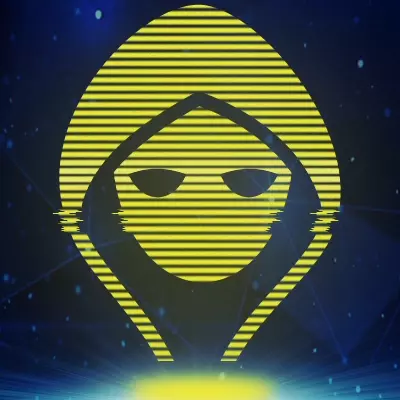
Size/Subtype
Borais are Medium undead, but they do not gain normal undead immunities.
Background
Borais are an unusual form of corporeal undead. Instead of being a dead body animated by negative energy, a borai has a mostly dead body that retains the smallest sliver of its soul. The two are inexorably bound, as the body draws vitality from the soul while the soul uses the body to remain on the Material Plane. Some borais are the results of partially botched resurrection attempts, either magical or technological, while others were people who were simply too stubborn to fully die when their time came.
Racial Abilities
Darkvision
Borais can see up to 60 feet in the dark.
Deathly
For effects targeting creatures by type, borais count as both humanoids and undead (whichever effect is worse). They are immune to negative energy damage and gain a +1 racial bonus to saving throws against disease, exhaustion, fatigue, mind-affecting effects, paralysis, poison, sleep effects, and stunning.
Living Shell
A borai counts as a living creature for the purposes of what can affect him (such as magic healing). If destroyed, a borai can be brought back to his normal undead state by spells (such as raise dead) that restore life to his body as if he were alive.
Old Talents
Borais’ not-quite-dead bodies still have some of their old racial traits. At character creation, a borai selects one of the following races as his original living form and gains the racial trait indicated in parenthesis for the selected race: android (upgrade slot), human (skilled), kasatha (four-armed), lashunta (limited telepathy), shirren (blindsense), vesk (natural weapons), or ysoki (cheek pouches). A GM can, at her discretion, allow a borai to choose another humanoid race, along with an appropriate racial trait. Additionally, when a borai attempts to disguise himself as a member of his selected race, the DC of his Disguise check is not modified as a result of disguising himself as a different creature type.
Resist Energy Drain
A borai takes no penalties from energy drain effects, but he can still be destroyed if he accrues more negative levels then he has class levels. After 24 hours, any negative levels a borai has taken are removed without the need for an additional saving throw.
khizars
Racial Traits
Ability adjustments+2 Con, +2 Wis, -2 Dex
Hit Points6
Vital StatsAverage Height 6-7 ft. Average Weight 150-200 lbs. Age of Maturity 60 years Maximum Age 500+3d% years

Size/Subtype
Khizars are Medium humanoids with the khizar and plantlike subtypes.
Background
Plantlike humanoids, the solemn khizars live in harmony with the natural environment, and many strive to protect the wilderness areas they inhabit. While this often brings them into conflict with other species and cultures, khizars are eager to learn about others’ ways in an effort to understand them.
Khizars are humanoids with two arms, two legs, vestigial vines on their backs, and greenish-brown skin of tough cellulose fiber. They have hydrostatic skeletal structures and bleed a thick sap-like liquid if cut. Their limbs end in rootlike tendrils with some manipulative ability, but these are clumsier than a humanoid’s fingers. Khizars’ heads are actually complex seedpods; these tough, translucent membranes over woody latticeworks contain phosphorescent seed clusters that glow softly through the papery membrane, giving the species the nickname “lanternfolk.” The color of this glow shifts as khizars experience different emotions, and canny observers can tell khizars’ mood before they convey a word. Lacking mouths, khizars “taste” things by touching or handling them with their digits.
Originating in the wild expanses of the untamed continent Ukulam on Castrovel, khizars developed from carrionfeeding plants that used slow movement and crude empathic senses to find dying animals to feed on. They eventually grew to have full-fledged societies, though they hardly approach the population numbers of elves, formians, or lashuntas. With space travel becoming more common, some khizars have relocated to the Ice Wells of Aballon to protect those natural spaces from the native robots’ encroaching megaplexes.
Khizars have a strong sense of individuality, but they maintain no gender or cultural divisions based on appearance, caste, wealth, or other indicators. The only things ancient khizars competed over were food sources and having new and novel experiences, and they tended to solve competitions over the former by embracing the latter. Khizars tend to be very protective of the natural spaces where they live, sometimes resulting in violent clashes, and many have recently joined or allied with the Xenowardens in defense of certain worlds. Khizars are oblivious to many physical differences in other species, so they judge people by their actions rather than their appearances.
Racial Abilities
Carbonic Respiration
Khizars breathe in carbon dioxide and exhale oxygen. In situations of slow suffocation, a khizar reduces the effective number of creatures consuming air by two, unless no oxygen-breathing creatures are present.
Evergreen
For effects targeting creatures by type, khizars count as both humanoids and plants. They receive a +2 racial bonus to saving throws against mind-affecting effects, paralysis, poison, sleep effects, and stunning, unless the effect specifies that it works against plants. Khizars can go without food for three times longer than other humanoids as long as they are exposed to natural sunlight for at least 4 hours per day.
Limited Telepathy
Khizars can communicate telepathically with any creatures within 30 feet with whom they share a language.
Senses and Speech
Khizars have no eyes or visual senses, other than the ability to perceive the presence or absence of light. Khizars have blindsense (vibration) and blindsight (life), each with a range of 30 feet. Khizars can’t speak and can communicate only via telepathy.
SROs
Racial Traits
Ability adjustments+2 Str or +2 Dex unlike other constructs, they have Constitution scores. Small SROs are agile (+2 Dexterity at character creation). Medium SROs are burly (+2 Strength at character creation). This decision is made at character creation and can’t be changed.
Hit Points2
Vital StatsAverage Height 6-7 ft. Average Weight 150-200 lbs. Age of Maturity 60 years Maximum Age 500+3d% years

Size/Subtype
SROs are Small or Medium constructs with the technological subtype
Background
SROs (short for “sentient robotic organisms”) are among the most advanced forms of robots, with internal circuits and positronic brains so complex that they, like androids, attract a soul and develop true artificial intelligence and free will. SROs are most common on Aballon, though they are different from the native anacites. Unlike androids, SROs do not have a unified appearance, and many are at best vaguely humanoid in shape, while others have shapes designed purely to assist in their primary functions.
Racial Abilities
Darkvision
SROs can see up to 60 feet in the dark.
Healing Circuit
In addition to being constructs and thus able to benefit from spells like make whole, SROs count as living creatures for the purposes of magic healing effects that work on living creatures, though the number of Hit Points restored in such cases is halved. A character must use the Engineering skill to perform the tasks of the Medicine skill on SROs. SROs also heal naturally over time as living creatures do, and can benefit from magic or technology that can bring constructs back from the dead, as well as effects that normally can’t (such as raise dead).
Integrated Equipment
An SRO has an internal, integrated standard datajack and comm unit. If an SRO is helpless, these can be removed or destroyed without damaging the SRO. They can be replaced or upgraded for the normal price of this equipment. An SRO has an additional built-in cybernetic component with an item level no greater than half the SRO’s character level (minimum item level 1). Each time the SRO gains a level, they can swap out this piece of equipment at no additional cost to represent internal reconfigurations. These pieces of equipment don’t count against the systems in which an SRO can install cybernetics.
Robotic
SROs are immune to bleed, disease, death effects, poison, nonlethal damage, and sleep effects unless those effects specify they affect constructs. SROs can be affected by effects or spells that normally target only humanoids, but receive a +4 racial bonus to saving throws against such effects. SROs can eat and drink, though they don’t need to, and they must recharge their internal batteries by entering an off-line mode that is similar to sleep for 8 hours every day. SROs do not breathe or suffer the normal environmental effects of being in a vacuum.
strix
Racial Traits
Ability adjustments+2 Dex, +2 Int, -2 Cha
Hit Points6
Vital StatsAverage Height 5-6 ft. Average Weight 115-150 lbs. Age of Maturity 12 years Maximum Age 50+1d20 years

Size/Subtype
Strix are Medium humanoids with the strix subtype.
Background
With their ebon feathers, murky eyes, and massive wings spreading behind them like angels’ pinions, strix are imposing people to anyone not familiar with their kind. Pre-Gap accounts speak of a small and usually isolationist population of strix on vanished Golarion. Today, strix still tend to keep to themselves, especially in the race’s most concentrated population in the Pact Worlds: a mysterious spire called Qidel, Aerie of the Sun, on Verces.
Racial Abilities
Darkvision
Strix can see up to 60 feet in the dark.
Nightborn
Strix gain a +2 racial bonus to Perception and Stealth checks in dim light or darkness.
Strix Mobility
Strix have a land speed of 20 feet and an extraordinary fly speed of 30 feet with average maneuverability.
Suspicious
Strix receive a +2 racial bonus to saving throws against illusion spells and effects.
Tinkerer
Strix have a natural eye for technology and can craft such items at incredible speed. It takes a strix a base time of 2 hours to craft a technological item.
barathu
Racial Traits
Ability adjustments+2 Con, +2 Wis, -2 Dex
Hit Points6
Vital StatsAverage Height 4-6 ft. Average Weight 150-250 lbs. Age of Maturity 30 years Maximum Age 500+3d% years

Size/Subtype
Early stage barathus are Medium aberrations.
Background
Barathus are the sentient apex of Bretheda’s gas-giant ecosystem, blimp-like creatures vaguely reminiscent of jellyfish, with several unusual evolutionary adaptations. The first is their ability to rewrite their own genetic code instinctively and at will, adjusting their own biology to allow them to manufacture a huge array of substances—and even advanced biotechnology— within the crucibles of their own bodies.
Yet while this ability makes them quite successful in the Pact Worlds economy, and has deeply influenced their culture’s understanding of wealth and trade, their more notable adaptation is the ability to combine with others of their kind into larger, hive-minded superentities. These mergings create not merely amalgams of their component beings, but entirely new entities with unique and independent consciousnesses, yet which in turn often disband back into their component individuals after a particular need or threat has passed.
Racial Abilities
Early Stage Adaptation
An early stage barathu’s body is mutable and can adapt to many different situations. Once every 1d4 rounds as a swift action, an early stage barathu can reshape its body and adjust its chemistry to gain one of the following qualities.
The adaptation lasts until the beginning of the early stage barathu’s next turn. Unlike more mature barathus, early stage barathus are not generally capable of more complex adaptations.
-
Upper limb refinements enable the barathu to add an additional amount of damage to melee attacks equal to its Strength modifier.
A toughened dermal layer grants its a +1 racial bonus to AC.
Developed lower limbs grant it a base speed of 15 feet.
Molecular-level modifications grant it resistance 2 against a single energy type (acid, cold, electricity, fire, or sonic).
Elongated limbs extend its reach to 10 feet.
Floaters
Early stage barathus have a base speed of 0 feet and an extraordinary fly speed of 30 feet with average maneuverability.
Limited Telepathy
Early stage barathus can communicate telepathically with any creatures within 30 feet with whom they share a language in common.
Strange Anatomy
Early stage barathus gain a +1 racial bonus to Fortitude saving throws.
Darkvision
Early stage barathus have darkvision with a range of 60 feet.
contemplative
Racial Traits
Ability adjustments+4 Int, +2 Cha, -2 Str, -2 Con
Hit Points2
Vital StatsAverage Height 3–4 ft. Average Weight 75–125 lbs. Age of Maturity 50 years Maximum Age 300+3d% years

Size/Subtype
Contemplatives are Medium monstrous humanoids.
Background
The beings known through the Pact Worlds as contemplatives of Ashok were once humanoids of extreme intelligence living on Akiton. Upon unlocking exceptional psychic powers, they deliberately evolved their brains, to the detriment of their bodies. Now, contemplatives float along using telekinesis, their atrophied bodies dangling from pulsating brain-sacs.
Racial Abilities
Applied Knowledge
Once per day before attempting a skill check or saving throw against a creature, a contemplative can use its bonus for the skill associated with that creature’s type (such as Life Science for an ooze or Mysticism for an outsider) in place of its normal bonus.
Atrophied
A contemplative’s limbs are practically vestigial. A contemplative can manipulate most tools and one-handed weapons (including small arms) without difficulty. A contemplative can’t properly wield a two-handed weapon without dedicating its telekinetic powers to supporting the weapon, and even then it takes a –4 penalty to attack rolls. It also can’t use its spell-like abilities or fly until it is no longer wielding that weapon.
Psychic Flight
Contemplatives fly supernaturally at a speed of 30 feet with average maneuverability, but their base speed is only 5 feet.
Psychic Senses
Contemplatives have blindsense (thought) out to 30 feet and darkvision to a range of 60 feet.
Limited Telepathy
Contemplatives have limited telepathy with a range of 30 feet.
draelik
Racial Traits
Ability adjustments+2 Con, +2 Wis, -2 Cha
Hit Points2
Vital StatsAverage Height 3–4 ft. Average Weight 75–125 lbs. Age of Maturity 50 years Maximum Age 300+3d% years

Size/Subtype
Draeliks are Medium humanoids with the draelik subtype.
Background
The Shadari Confederacy lies cloaked deep within an area known as the Kurzach Nebula: an immense cloud of ionized, dingy-colored gases that block most scans and make astrogation difficult. As such, this loose organization houses all manner of fugitives, itinerants, and other scoundrels, and it is led by the inhabitants of Great Shadar, a waterless planet orbiting this system’s dim star. These residents call themselves draeliks, and they are singularly united in support of the Confederacy’s lawless ideals. To outsiders, however, they often seem more beholden to the grotesque sceaduinars: extraplanar creatures from the Negative Energy Plane, and the main figures of the most prominent draelik faith.
Racial Abilities
Darkvision
Draeliks gain darkvision out to 60 feet.
Draelik Magic
Draeliks gain the spells listed below as spell-like abilities. The caster level for these effects is equal to the draelik’s character level. 1/day—wisp ally At will—fatigue, ghost sound
Lurker
Draeliks receive a +4 bonus to Stealth checks in dim light or darker conditions.
Necromancy Resistance
Draeliks receive a +2 racial bonus to saving throws against necromancy effects.
drow
Racial Traits
Ability adjustments+2 Dex, +2 Cha, -2 Con
Hit Points4
Vital StatsAverage Height 5-1/2 to 6-1/2 ft. Average Weight 100–150 lbs. Age of Maturity 100 years Maximum Age 350+4d% years

Size/Subtype
Drow are Medium humanoids with the elf subtype.
Background
With purple skin and white hair, drow are physically beautiful but merciless. Common drow form the majority of civilian and military forces and are governed by more powerful drow nobles. This strictly matriarchal culture leaves few opportunities for a common male, and training as an enforcer for a noble house or arms dealer is one of only a few ways a drow male can secure a somewhat comfortable life—if not necessarily a long one.
Drow are ruthless opponents, having no qualms about setting ambushes or luring enemies to locations where they have the upper hand. They regard ideals such as fairness and honor as pathetic gestures of lesser races, and consider all who hold such beliefs deserving of exploitation. Drow have no compunction about using other races as slaves and minions, using them as cannon fodder when exploring potentially dangerous new locations or as a line of defense that allows drow to flee to safety when an encounter turns against them.
Racial Abilities
Darkvision
Drow have darkvision with a range of 60 feet.
Drow Immunities
Drow are immune to magical sleep effects and receive a +2 racial bonus to saving throws against enchantment spells and effects.
Keen Senses
Drow receive a +2 racial bonus to their Perception checks.
Light Blindness
A drow exposed to bright light is blinded for 1 round, and dazzled as long as she remains in areas of bright light.
Drow Magic
Drow gain the following spell-like abilities. The caster level for these effects is equal to the drow’s level.
At will— dancing lights, detect magic
In addition, drow count as having the Minor Psychic Power feat for the purpose of meeting prerequisites, and if a drow takes the Psychic Power feat, she can add the drow noble’s limning light supernatural ability to the list of spell-like abilities available to her.
Limning Light: As a standard action, a drow noble can cause all creatures and objects in a 5-foot-radius burst to shed a pale glow. Creatures outlined by the limning light take a –20 penalty to Stealth checks and don’t benefit from the concealment usually provided by darkness. If an affected creature is benefiting from an effect such as invisibility, all others within line of sight of it become aware of its location (see page 260 of the Starfinder Core Rulebook). This effect lasts for a number of minutes equal to the drow level. This ability has a range of 100 feet.
formian
Racial Traits
Ability adjustments+2 Str, +2 Con, -2 Wis
Hit Points4
Vital StatsAverage Height 6–8 ft. Average Weight 150–250 lbs. Age of Maturity 1 years Maximum Age 15+1d10 years

Size/Subtype
Formians are Medium monstrous humanoids.
Background
Formians resemble giant ants with humanoid upper bodies, and carve their chitinous plates with insignias reflecting their individual names and achievements. Members of a hive all share a telepathic link, allowing them to coordinate efficiently.
Within a hive are castes specialized to particular tasks. The queen leads the hive and is its sole means of propagation, while castes like the aristocratic myrmarchs and mercantile taskmasters direct lower castes like warriors and workers.
Formian workers are the backbone of hive labor and hatched in large clutches-many workers never gain a name beyond their number within the clutch. While strong, they typically flee combat unless ordered to fight. Formian warriors, by contrast, are fierce sterile females, each with a stronger individual identity to allow for more effective battle tactics. This individualism makes warriors more likely to chafe under strict hive hierarchies, and these are the formians most likely to set out on their own.
Formians are most common on Castrovel. For millennia they sought to eradicate the lashunta, their traditional foes, but their queens now instead focus on adopting other species’ technology to industrialize their traditional hive societies.
Racial Abilities
Formian Sensesn
Formians have darkvision with a range of 60 feet, and they have blindsense (scent) with a range of 30 feet.
Limited Telepathy
Formians can communicate telepathically with any creatures within 30 feet with whom they share a language.
Natural Weapons
Formians are always considered armed. They can deal 1d3 lethal piercing damage with unarmed strikes, and those attacks don’t count as archaic. Formians gain a unique weapon specialization with their natural weapons at 3rd level, allowing them to add 1-1/2 × their character level to their damage rolls for their natural weapons (instead of just adding their character level).
Sonic Resistance
Thanks to the chitinous plates that cover them, formians have sonic resistance 5.
gray
Racial Traits
Ability adjustments+4 Int, -2 Str
Hit Points2
Vital StatsAverage Height 2–4 ft. Average Weight 30–60 lbs. Age of Maturity 25 years Maximum Age 400+4d% years

Size/Subtype
Grays are Small humanoids with the gray subtype.
Background
No one knows what planet or even galaxy the grays call home, but reports of their unnerving abductions, nightmarish paralysis, and mysterious experiments have been collected from countless worlds for as long as starships have sailed in the dark spaces of the universe. Such reports are fragmentary and unreliable, offered by victims recounting hazy memories of enduring various procedures under clinically bright lights or waking in cramped and lightless confinement, and do little to explain the methodology or goals of their captors. Those captors, though, have much in common no matter the specific circumstances or the species of the victim: an otherworldly presence, condescending interactions, and a sinister disregard for the agency and dignity of those they take as subjects for their experiments.
Grays communicate only telepathically, even among their own kind. Their faces and glassy black eyes show little emotion or reaction, and while graceful, they usually move with deliberate intention, often spending several moments in thought before committing to an action or movement. This inscrutability renders them enigmatic and disturbing to most other races.
Little is known about the grays’ motivations, and to date no efforts have been successful at establishing diplomatic relationships with them. However, their goals appear to center around the search for information, rather than conquest. Victims of their paralytic abductions are almost always returned mostly unharmed, though the sudden appearance of a series of scars or an inexplicable implant undermines the effects of the grays’ ability to erase memories of the experience. Researchers wonder at the end goals of this accumulation of knowledge and what purposes the information gleaned may serve in the meantime. Some fringe scientists believe grays are preparing for an eventual all-out invasion, while others posit they are simply curious about us, but their alien mindsets lead them to sate this inquisitiveness in disturbing ways.
Once rare enough that reports of their abductions were written off as conspiracy and delusion, encounters with grays have become disturbingly more common with the advent of Drift travel. Their sleek, disk-shaped starships lurk in the dark corners of the Drift, appearing seemingly out of nowhere to confront vessels with inattentive or unwary crews. Much like the grays themselves, their ships are designed less for offense and more for evading and subduing their targets, employing tractor beams and EMP weapons to disable and control a vessel, preserving its crew as test subjects. Such captives find themselves unable to move, held under brilliant lights, their captors mere silhouettes as their thoughts and memories are sifted under the gray’s psychic touch.
Racial Abilities
Darkvision
Grays have darkvision with a range of 60 feet.
Gray Magic
Grays gain the following spell-like abilities. The caster level for these effects is equal to the gray’s level.
1/day—mind thrust (1st level)
At will—daze, telepathic message
Phase
A gray can shift itself out of phase with reality as a reaction to gain a 20% miss chance against one attack. A gray can use this ability a number of times per day equal to its Constitution modifier.
Limited Telepathy
Grays have limited telepathy with a range of 30 feet.